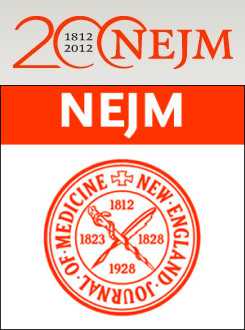NEJM:芯片有助于揭开引发婴儿死产的遗传原因
2013-05-06 T.Shen 生物谷
2012年12月9日 讯 /生物谷BIOON/ --在美国160例孕妇生育过程中就会有一例发生死产,近日,一项刊登于国际医学杂志New England Journal of Medicine上的研究中,来自得克萨斯大学医学分校的研究者使用微阵列技术对死产婴儿的染色体进行分析研究,这种微阵列技术相比过去的核型检测技术更为有效。 研究者George Saade表示,许多家庭都应该明白引发婴儿死亡的原
2012年12月9日 讯 /生物谷BIOON/ --在美国160例孕妇生育过程中就会有一例发生死产,近日,一项刊登于国际医学杂志New England Journal of Medicine上的研究中,来自得克萨斯大学医学分校的研究者使用微阵列技术对死产婴儿的染色体进行分析研究,这种微阵列技术相比过去的核型检测技术更为有效。
研究者George Saade表示,许多家庭都应该明白引发婴儿死亡的原因,而且医生也能够得到每一位死产婴儿的遗传信息,以便在后期婴儿出生过程中减少死产的发生比率。研究中,研究人员对比了超过500位死产婴儿的核型分析结果以及微阵列分析结果,微阵列分析技术可以检测出婴儿机体染色体缺失部分的小片段或者遗传信息的额外碎片,这些都是核型分析所不能检测出来的。
研究者对来自美国5个地区、覆盖59各医院的所有死产样品,进行了长达两年半的研究分析,死产婴儿父母给予研究者权利去采集胎儿和胎盘的脐带血和组织中的血液。
在大多数情况下,孕妇发生死产的的原因都不会立马被查明,传统的方法就是检测婴儿染色体是否发生了变化,典型的检测方法就是进行核型分析检测,这种方法检测并不完善,需要许多改进的地方,而且许多情况下,其并不能检测出婴儿死产的原因,至今仍有25%-60%的死产原因不得而知。
因此本项研究中,研究者提出的使用微阵列分析技术来对死产婴儿的染色体进行分析,相比核型分析可以更加有效地查明婴儿死产的原因,这可以帮助医生和患者家属更加清楚地理解发生死产的原因,而且对于今后预防婴儿发生死产以及开发预防的疗法提供了新的思路和帮助。

doi:10.1056/NEJMoa1201569
PMC:
PMID:
Karyotype versus Microarray Testing for Genetic Abnormalities after Stillbirth
Uma M. Reddy, M.D., M.P.H., Grier P. Page, Ph.D., George R. Saade, M.D., Robert M. Silver, M.D., Vanessa R. Thorsten, M.P.H., Corette B. Parker, Dr.P.H., Halit Pinar, M.D., Marian Willinger, Ph.D., Barbara J. Stoll, M.D., Josefine Heim-Hall, M.D., Michael W. Varner, M.D., Robert L. Goldenberg, M.D., Radek Bukowski, M.D., Ph.D., Ronald J. Wapner, M.D., Carolyn D. Drews-Botsch, Ph.D., Barbara M. O'Brien, M.D., Donald J. Dudley, M.D., and Brynn Levy, Ph.D. for the NICHD Stillbirth Collaborative Research Network
Background Genetic abnormalities have been associated with 6 to 13% of stillbirths, but the true prevalence may be higher. Unlike karyotype analysis, microarray analysis does not require live cells, and it detects small deletions and duplications called copy-number variants. Methods The Stillbirth Collaborative Research Network conducted a population-based study of stillbirth in five geographic catchment areas. Standardized postmortem examinations and karyotype analyses were performed. A single-nucleotide polymorphism array was used to detect copy-number variants of at least 500 kb in placental or fetal tissue. Variants that were not identified in any of three databases of apparently unaffected persons were then classified into three groups: probably benign, clinical significance unknown, or pathogenic. We compared the results of karyotype and microarray analyses of samples obtained after delivery. Results In our analysis of samples from 532 stillbirths, microarray analysis yielded results more often than did karyotype analysis (87.4% vs. 70.5%, P<0.001) and provided better detection of genetic abnormalities (aneuploidy or pathogenic copy-number variants, 8.3% vs. 5.8%; P=0.007). Microarray analysis also identified more genetic abnormalities among 443 antepartum stillbirths (8.8% vs. 6.5%, P=0.02) and 67 stillbirths with congenital anomalies (29.9% vs. 19.4%, P=0.008). As compared with karyotype analysis, microarray analysis provided a relative increase in the diagnosis of genetic abnormalities of 41.9% in all stillbirths, 34.5% in antepartum stillbirths, and 53.8% in stillbirths with anomalies. Conclusions Microarray analysis is more likely than karyotype analysis to provide a genetic diagnosis, primarily because of its success with nonviable tissue, and is especially valuable in analyses of stillbirths with congenital anomalies or in cases in which karyotype results cannot be obtained. (Funded by the Eunice Kennedy Shriver National Institute of Child Health and Human Development.)
本网站所有内容来源注明为“梅斯医学”或“MedSci原创”的文字、图片和音视频资料,版权均属于梅斯医学所有。非经授权,任何媒体、网站或个人不得转载,授权转载时须注明来源为“梅斯医学”。其它来源的文章系转载文章,或“梅斯号”自媒体发布的文章,仅系出于传递更多信息之目的,本站仅负责审核内容合规,其内容不代表本站立场,本站不负责内容的准确性和版权。如果存在侵权、或不希望被转载的媒体或个人可与我们联系,我们将立即进行删除处理。
在此留言









#芯片#
57
#死产#
57